Andersonville Civil War Prison
May 14, 2019 07:07:35 #
Both the North and the South were completely unprepared for the Civil War, including how to deal with the large numbers of captured troops. Until 1863 a prisoner and mail exchange program existed between the two warring sided. As the war dragged on, the North terminated the parole of Southern POWs to further wear down the manpower available to the southern armies. Camp Sumter (Andersonville Prison) opened in south George in February 1864 and served to April 1865.
Andersonville National Historic Site
Macon County, GA
October 2018
Andersonville Civil War Prison by Paul Sager, on Flickr
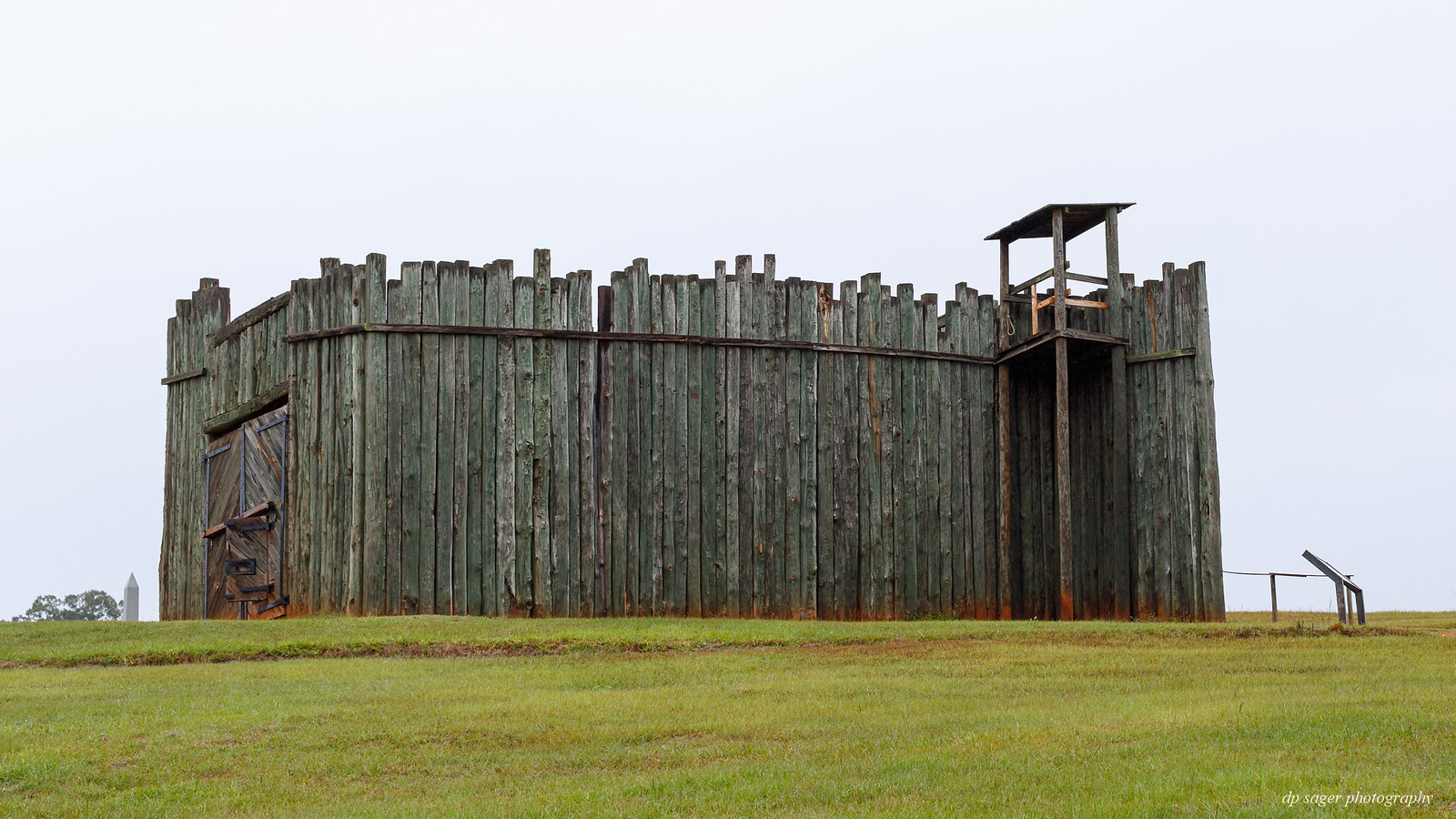
In the South, captured Union soldiers were first housed in old warehouses and barns. As the number of prisoners increased following the end of regular exchanges in 1863, camps were built specifically as prisons in Florence, South Carolina; Millen and Andersonville, Georgia, and many other locations. Most were wooden stockades enclosing open fields. A small portion of the stockade wall has been recreated along with pigeon (guard) towers.
Andersonville Civil War Prison
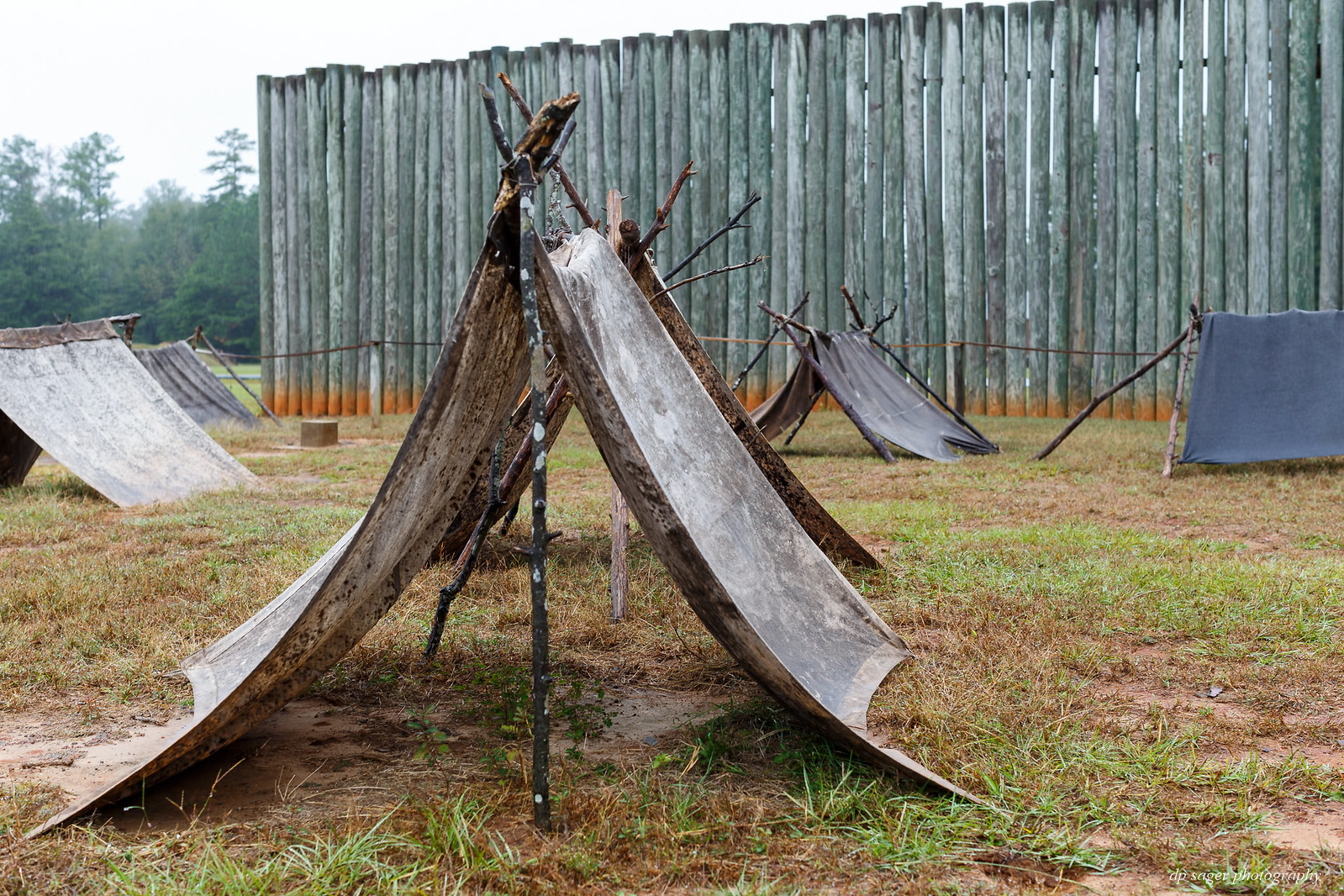
The worst Civil War prison was at Andersonville, Georgia. It was little more than an open field, surrounded by 15-foot-high walls made of tree trunks. Nearly 30 percent (nearly 13,000) of its 45,000 Union prisoners died in only 14 months. Andersonville was overcrowded to four times the planned capacity, with an inadequate water supply, inadequate food rations, and unsanitary conditions.
Andersonville Civil War Prison
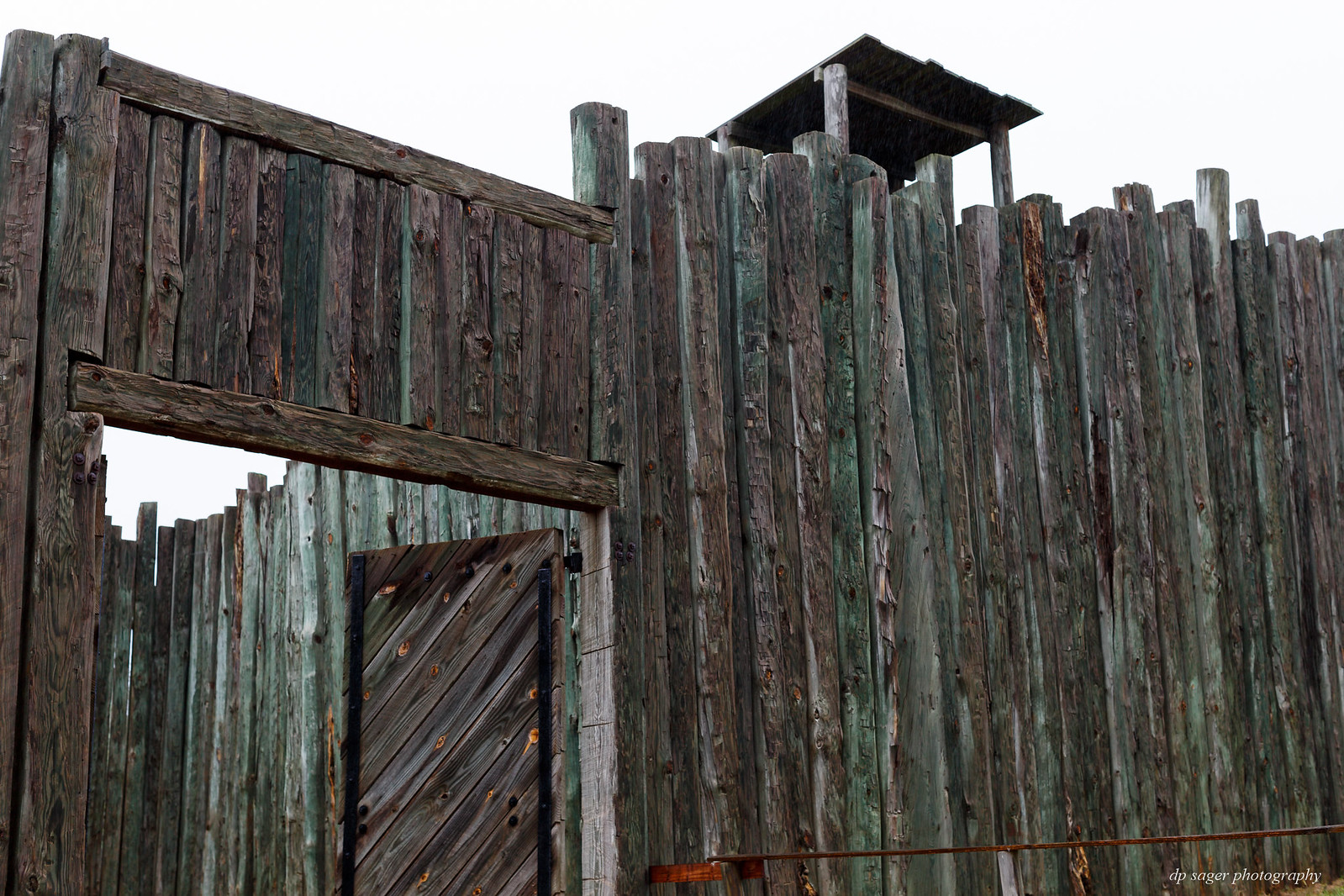
Often referred to as "shebangs", the rough shelters improvised by prisoners were known by many names: shelters, huts, tents, shelter tents, blanket tents, and many others. Shelter, or lack thereof, was a defining part of the Andersonville experience for many prisoners.
Andersonville Civil War Prison
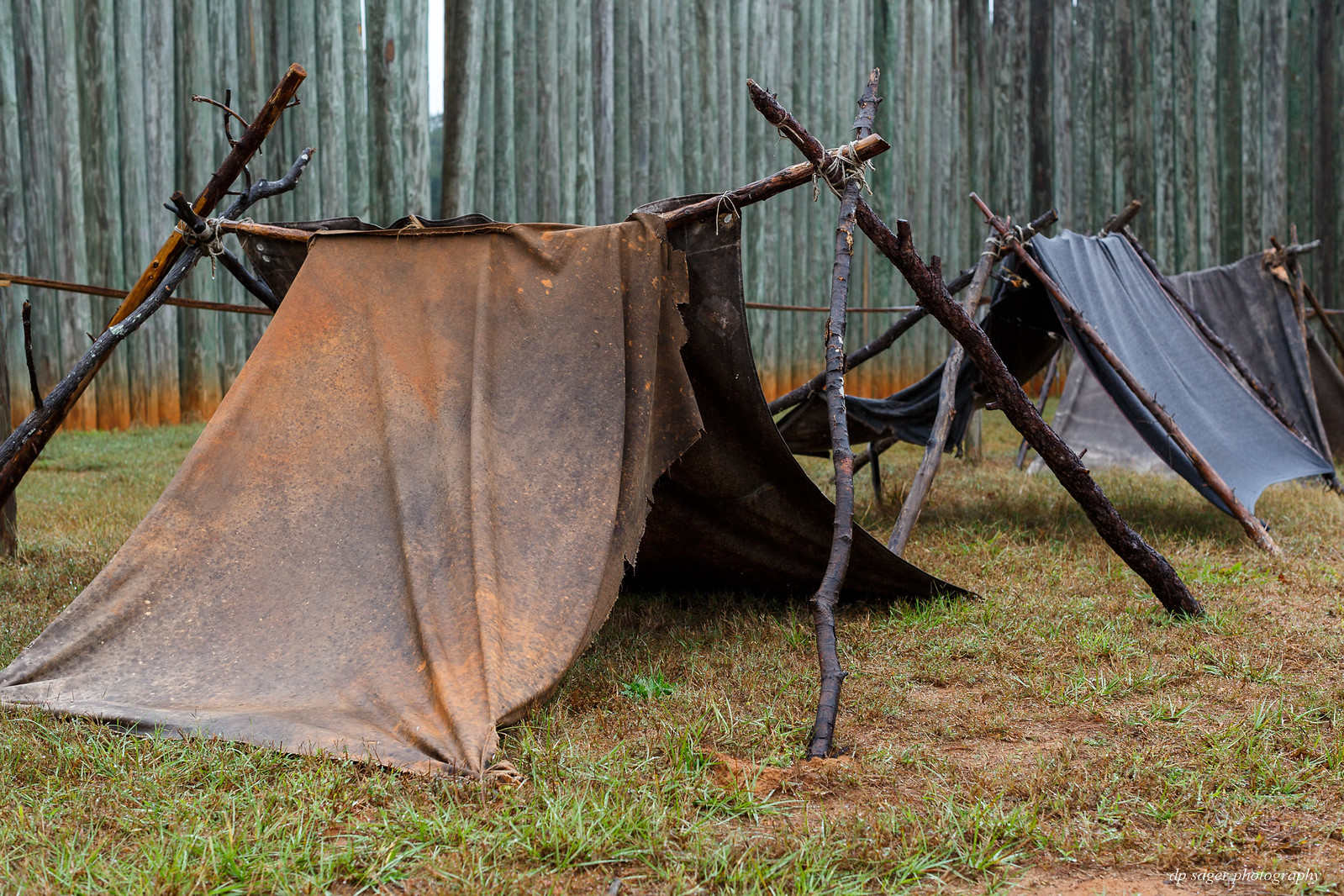
The sudden appearance of the spring at the western wall of the stockade in August 1864 was a treasured memory, and life-saver, of many Union survivors of the prison. By the 1880s, visiting the site of the spring was an important Memorial Day tradition.
Following the initial preservation of the prison site in the 1890s by the Grand Army of the Republic, the Woman's Relief Corps arranged for the spring house to cover the site of the spring. The Providence Spring house was dedicated on Memorial Day, 1901.
Providence Spring
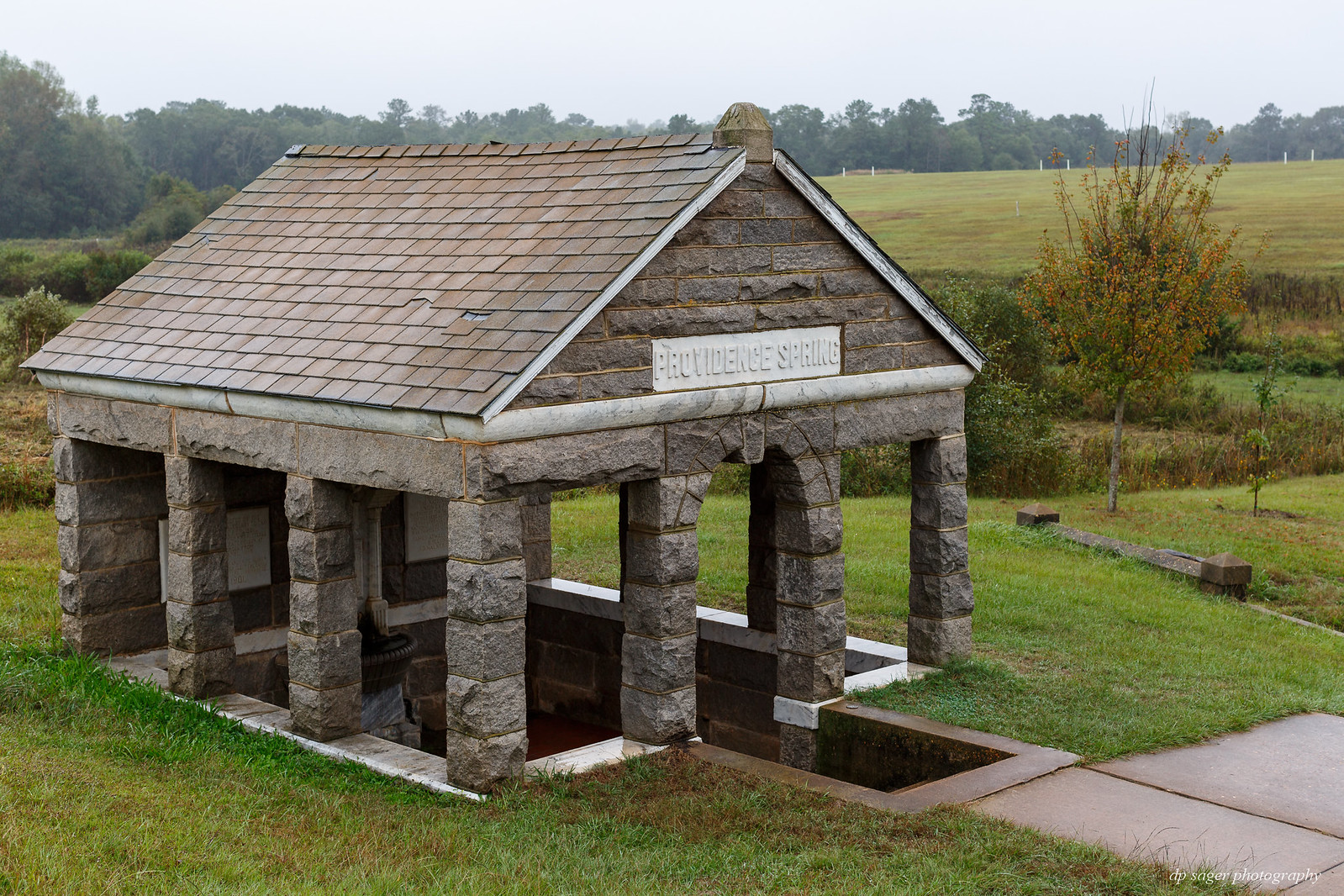
In the area of the northwest corner of the prison stockade are twelve monuments, dating from 1901 through 1934. Seven of the monuments are dedicated to states who had soldiers imprisoned here or otherwise commemorate the prison experience. Dedicated in 1904, the Michigan Monument was a result of efforts led by J.A. Griffin, a former Andersonville prisoner.
Michigan Monument by Paul Sager, on Flickr

Governor Jimmy Carter, who had worked toward's Andersonville's inclusion in the National Park System, encouraged the State of Georgia to place a monument at the park. Sculptor William Thompson designed his work to have a universal quality, and no reference to any particular uniform or specific details. The sculpture is dedicated to all American prisoners involved in all American wars, past, present and future.
Georgia Monument

The National Cemetery, located 300 yards north of the prison site, was established in 1864. The 12,920 men who died at the prison camp are buried in the cemetery. The first burial took place on February 27, 1864, only three days after prisoners first arrived. Graves for the Union prisoners were trenches 3 feet deep and between 100 and 200 feet long.
Andersonville National Cemetery

In 1907 the legislature of the State of Illinois authorized a monument in memory of the state's 889 known dead at Andersonville. Columbia with outstretched hand is pointing to the heroes resting in their graves. Youth and Maiden, listening, gaze in the direction Columbia is pointing. On either wing of the pedestal is carved in bold letters the last clause of President Lincoln's first inaugural address and the last clause of his memorable speech on the battlefield of Gettysburg. We here highly resolve that these dead shall not have died in vain -- that this nation, under God, shall have a new birth of freedom -- and that government of the people, by the people, for the people, shall not perish from the earth.
Illinois Monument

Nine state monuments have been dedicated within the Andersonville National Cemetery to commemorate Union soldiers who were imprisoned or perished at the Andersonville prison. The three other monuments are dedicated to the broader themes of the park, commemorating POWs in all wars as well as unknown soldiers. Since the 1870s approximately 7,000 American servicemen and their families have joined the prisoner burials and made Andersonville National Cemetery their final resting place.
The images are sized to fill your wide-screen display. Try using <F11> to maximize your browser window for the full effect. If the images overshoot your display, such as a laptop, just click on the image or the URL link and they'll resize to your screen from the host Flickr site. You can click a bit further into the image details on the Flickr page, if desired. EXIF data is available from the host Flickr pages as well. On the Flickr site, use your <L>key for Large and the <F11> for the full-screen.
If the images are not filling your widescreen display due to recent UHH changes, follow this link and update your UHH profile: https://www.uglyhedgehog.com/t-572300-1.html
Andersonville National Historic Site
Macon County, GA
October 2018
Andersonville Civil War Prison by Paul Sager, on Flickr

In the South, captured Union soldiers were first housed in old warehouses and barns. As the number of prisoners increased following the end of regular exchanges in 1863, camps were built specifically as prisons in Florence, South Carolina; Millen and Andersonville, Georgia, and many other locations. Most were wooden stockades enclosing open fields. A small portion of the stockade wall has been recreated along with pigeon (guard) towers.
Andersonville Civil War Prison

The worst Civil War prison was at Andersonville, Georgia. It was little more than an open field, surrounded by 15-foot-high walls made of tree trunks. Nearly 30 percent (nearly 13,000) of its 45,000 Union prisoners died in only 14 months. Andersonville was overcrowded to four times the planned capacity, with an inadequate water supply, inadequate food rations, and unsanitary conditions.
Andersonville Civil War Prison

Often referred to as "shebangs", the rough shelters improvised by prisoners were known by many names: shelters, huts, tents, shelter tents, blanket tents, and many others. Shelter, or lack thereof, was a defining part of the Andersonville experience for many prisoners.
Andersonville Civil War Prison

The sudden appearance of the spring at the western wall of the stockade in August 1864 was a treasured memory, and life-saver, of many Union survivors of the prison. By the 1880s, visiting the site of the spring was an important Memorial Day tradition.
Following the initial preservation of the prison site in the 1890s by the Grand Army of the Republic, the Woman's Relief Corps arranged for the spring house to cover the site of the spring. The Providence Spring house was dedicated on Memorial Day, 1901.
Providence Spring

In the area of the northwest corner of the prison stockade are twelve monuments, dating from 1901 through 1934. Seven of the monuments are dedicated to states who had soldiers imprisoned here or otherwise commemorate the prison experience. Dedicated in 1904, the Michigan Monument was a result of efforts led by J.A. Griffin, a former Andersonville prisoner.
Michigan Monument by Paul Sager, on Flickr

Governor Jimmy Carter, who had worked toward's Andersonville's inclusion in the National Park System, encouraged the State of Georgia to place a monument at the park. Sculptor William Thompson designed his work to have a universal quality, and no reference to any particular uniform or specific details. The sculpture is dedicated to all American prisoners involved in all American wars, past, present and future.
Georgia Monument

The National Cemetery, located 300 yards north of the prison site, was established in 1864. The 12,920 men who died at the prison camp are buried in the cemetery. The first burial took place on February 27, 1864, only three days after prisoners first arrived. Graves for the Union prisoners were trenches 3 feet deep and between 100 and 200 feet long.
Andersonville National Cemetery

In 1907 the legislature of the State of Illinois authorized a monument in memory of the state's 889 known dead at Andersonville. Columbia with outstretched hand is pointing to the heroes resting in their graves. Youth and Maiden, listening, gaze in the direction Columbia is pointing. On either wing of the pedestal is carved in bold letters the last clause of President Lincoln's first inaugural address and the last clause of his memorable speech on the battlefield of Gettysburg. We here highly resolve that these dead shall not have died in vain -- that this nation, under God, shall have a new birth of freedom -- and that government of the people, by the people, for the people, shall not perish from the earth.
Illinois Monument

Nine state monuments have been dedicated within the Andersonville National Cemetery to commemorate Union soldiers who were imprisoned or perished at the Andersonville prison. The three other monuments are dedicated to the broader themes of the park, commemorating POWs in all wars as well as unknown soldiers. Since the 1870s approximately 7,000 American servicemen and their families have joined the prisoner burials and made Andersonville National Cemetery their final resting place.
The images are sized to fill your wide-screen display. Try using <F11> to maximize your browser window for the full effect. If the images overshoot your display, such as a laptop, just click on the image or the URL link and they'll resize to your screen from the host Flickr site. You can click a bit further into the image details on the Flickr page, if desired. EXIF data is available from the host Flickr pages as well. On the Flickr site, use your <L>key for Large and the <F11> for the full-screen.
If the images are not filling your widescreen display due to recent UHH changes, follow this link and update your UHH profile: https://www.uglyhedgehog.com/t-572300-1.html
May 14, 2019 07:17:10 #
May 14, 2019 07:18:26 #
May 14, 2019 07:18:38 #
May 14, 2019 07:21:37 #
LarryFitz
Loc: Beacon NY
My great grandfather Sebestian Niederriter a member of 103d Regiment (Pennsylvania). He was held at Andersonville and was one of the lucky ones to survive. He attended the 1905 dedication of a monument.
May 14, 2019 07:22:35 #
Great captures Paul... I live just a few miles from Chickamauga and really enjoy doing the Civil War historical sites. Capturing these images in mono adds something to the viewing experience. Andersonville was brutal; I have not yet visited this site bit will def. do in near future.I really like the 3 figure sculpture which reminds me of the one at Shiloh..... Great Images; thanks for posting. A little ways from the Windy City Eh ?
May 14, 2019 07:23:39 #
May 14, 2019 07:24:58 #
May 14, 2019 07:25:21 #
May 14, 2019 07:27:54 #
Great photos, and thanks for the history. My great-great grandfather was a prisoner there from April 1864, just two months after he was enlisted, until the end of war. In a letter he wrote afterwards he said that when he enlisted he was a young man full of vim and vigor, but returned from war an old man full of sickness and misery. He was in his early thirties.
May 14, 2019 07:39:09 #
My high school put on the play. I was in the audience, not on the stage.
May 14, 2019 07:40:18 #
May 14, 2019 08:03:35 #
LarryFitz wrote:
My great grandfather Sebestian Niederriter a member of 103d Regiment (Pennsylvania). He was held at Andersonville and was one of the lucky ones to survive. He attended the 1905 dedication of a monument.
Thank you LarryFitz! I've seen newsreel footage of the 75th reunion at Gettysburg with the few remaining survivors with long white beards like Moses. The lush grass of the field today masks the horrors of the camp, although a rainy afternoon in October started to give a small sense of living outdoors in a shebang with nothing but the uniform on your back when captured.
May 14, 2019 08:04:03 #
MrBob wrote:
Great captures Paul... I live just a few miles from Chickamauga and really enjoy doing the Civil War historical sites. Capturing these images in mono adds something to the viewing experience. Andersonville was brutal; I have not yet visited this site bit will def. do in near future.I really like the 3 figure sculpture which reminds me of the one at Shiloh..... Great Images; thanks for posting. A little ways from the Windy City Eh ?
Thank you MrBob! I've now been to several battle sites and prison sites. We had a Camp Douglas on the southside of Chicago that was nearly as brutal as Andersonville as well as prisons on Rock Island, and the state capitals of Illinois, Indiana and Ohio.
May 14, 2019 08:04:54 #
BlueMorel wrote:
Great photos, and thanks for the history. My great-great grandfather was a prisoner there from April 1864, just two months after he was enlisted, until the end of war. In a letter he wrote afterwards he said that when he enlisted he was a young man full of vim and vigor, but returned from war an old man full of sickness and misery. He was in his early thirties.
Thank you BlueMorel! You might be interested in Andersonville: The Last Depot by Willam Marvel. I read this narrative of the prison telling the stories several individuals from their enlistment through (mostly) death at the prison. Your ancestor's story sounds like the stories in the book and of the nearly ever 45,000 that spent time there.
If you want to reply, then register here. Registration is free and your account is created instantly, so you can post right away.








